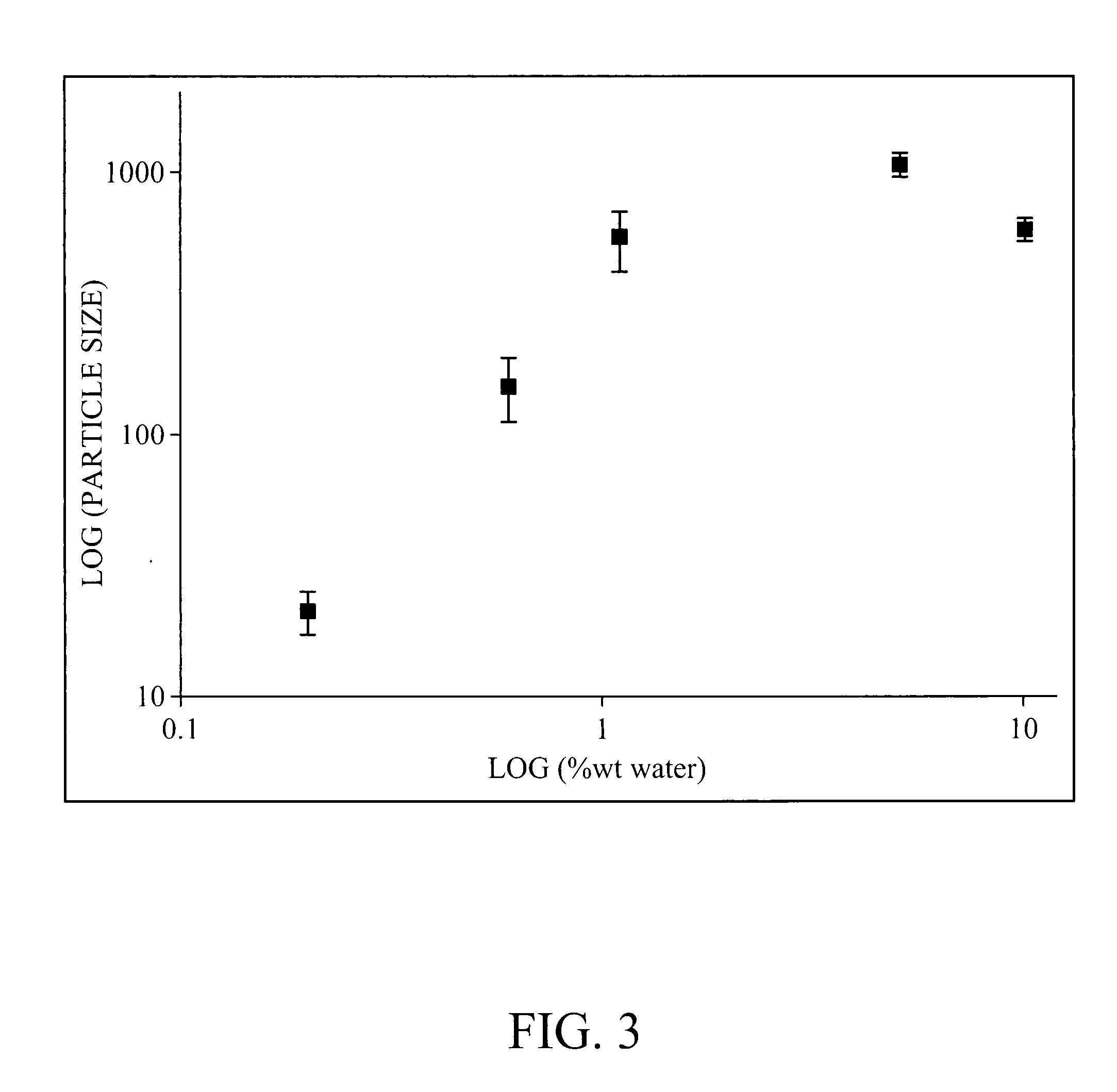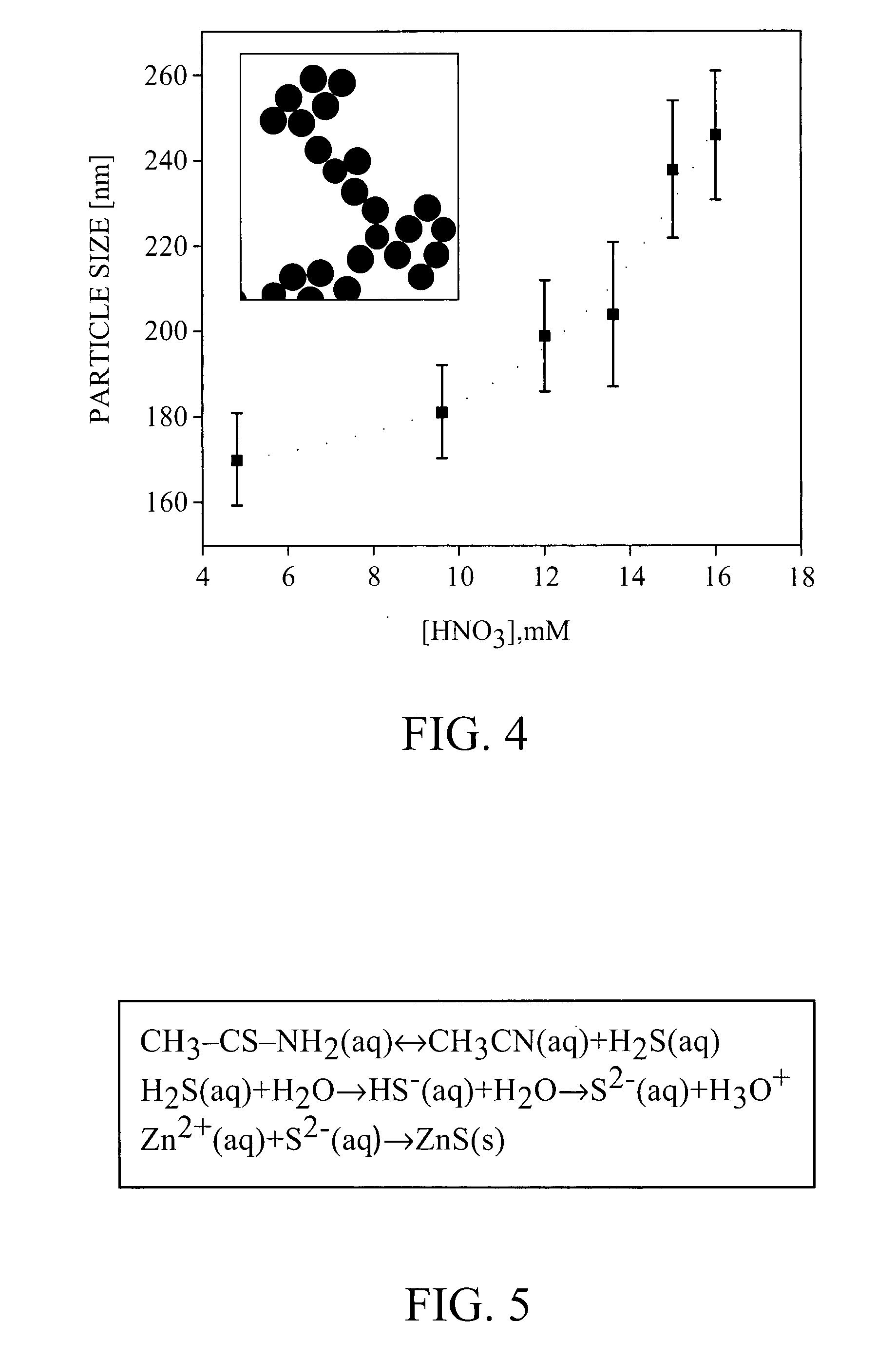High refractive index crystalline colloidal arrays materials and a process for making the same
- Summary
- Abstract
- Description
- Claims
- Application Information
AI Technical Summary
Benefits of technology
Problems solved by technology
Method used
Image
Examples
example 1
[0085] 4.44 g Zinc nitrate and 11.28 g thioacetamide (TAA) were allowed to react at room temperature in ethylene glycol with 20 wt % acidic water (comprising 5 mM nitric acid). After 18 hours of seeding, 18±2 nm ZnS nanoparticles were formed. The solution mixture was heated to 70° C. Particle size was controlled by the reaction time or the nitric acid concentration and can be tuned in the range of 130-300 nm. The reaction vessel was then cooled down in ice-water bath. After complete cool down, the particles in the solution were centrifuged and re-dispersed in 50 ml ethanol. At that point, particle size was determined by transmission electron microscopy (TEM). After 28 minutes of incubation at 70° C., the particle size was 187±13 nm (standard deviation ˜7%). A refractive index of 2 was estimated from the reflectance spectrum of a closed packed layer of these particles.
example 2
[0086] While the process for preparing monodisperse ZnS particles was optimized using 20 wt % water in the reaction, it is possible to perform the synthesis using different water concentrations by optimizing the amount of thioacetamide (TAA), the reaction temperature and the reaction duration to control the release of sulfur during the reaction. As an example, precipitation of ZnS in ethylene glycol with 0.6 wt % water at 70° C. with 0.8 mM HNO3, 0.25M TAA and 0.025M Zn(NO3)2 yielded highly monodisperse particles with an average size of 134 nm±14 nm (See FIG. 14).
example 3
[0087] 4.44 g zinc nitrate and 11.28 g thioacetamide were allowed to react at room temperature in ethylene glycol with 20 wt % acidic water (comprising 5 mM nitric acid). After 18 hours of seeding, 18±2 nm ZnS nanoparticles were formed. The solution mixture was then heated to 75° C. The reaction vessel was cooled down in ice-water bath. After complete cool down, the particles in the solution were centrifuged and re-dispersed in 50 ml ethanol. At that point, particle size was determined by TEM. After 28 minutes of incubation at 75° C., the particle size was 268±14 nm (standard deviation ˜5%). (See FIG. 15.) A refractive index of 2.2 was estimated from the reflectance spectrum of a close packed layer of these particles.
PUM
| Property | Measurement | Unit |
|---|---|---|
| Diameter | aaaaa | aaaaa |
| Diameter | aaaaa | aaaaa |
| Molar density | aaaaa | aaaaa |
Abstract
Description
Claims
Application Information
 Login to View More
Login to View More - R&D
- Intellectual Property
- Life Sciences
- Materials
- Tech Scout
- Unparalleled Data Quality
- Higher Quality Content
- 60% Fewer Hallucinations
Browse by: Latest US Patents, China's latest patents, Technical Efficacy Thesaurus, Application Domain, Technology Topic, Popular Technical Reports.
© 2025 PatSnap. All rights reserved.Legal|Privacy policy|Modern Slavery Act Transparency Statement|Sitemap|About US| Contact US: help@patsnap.com



